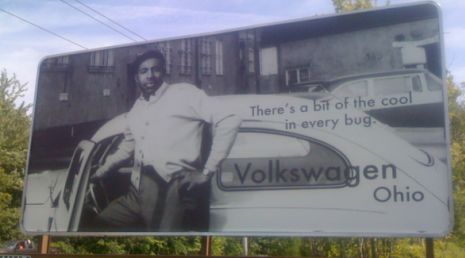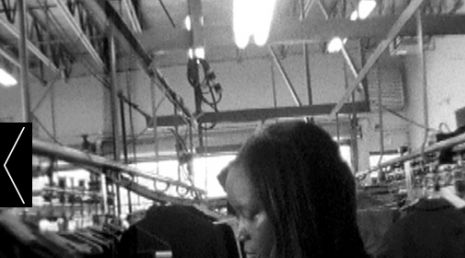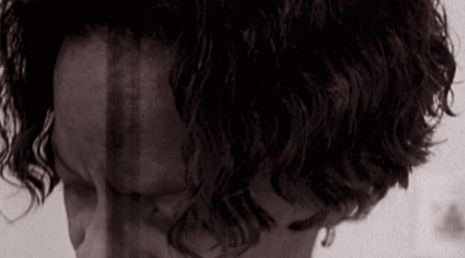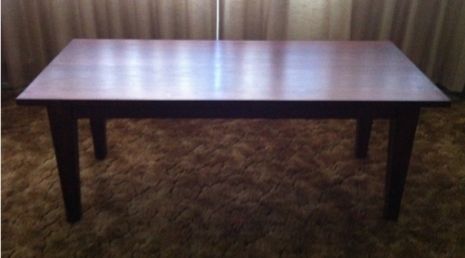Working Methods
Yes, I made up that screenplay about two months ago.
When I got into the Biennial, yeah. I made it up for the catalogue, yeah.
I think the only script was that we had to be at the dry cleaners by ten-thirty.
No, Quality Control wasn’t scripted. "Erie" was more scripted. Only one thing in ‘Erie was not made up and that was that guy trying to get his keys out of his car.
“Erie” is more narrative.
That’s one of the formal devices of it.
The first scene I have workers hanging a billboard. That billboard is based on old billboards that they used to advertise in the South to have blacks come up to the North to the factories. For me, that’s about the South.
And the next scene is a GM worker talking about retirement and their jobs. Then the scene after that, which is important, is right when you see those sword fighters. The sound of the metal on metal, those swords are hand-made. Someone had to make those swords. Then there is the scene of the guy whose working in the hospital. That has to do with the contemporary economy, the factories are no longer the biggest employer, and medical facilities are the biggest employer. The last scene is the woman on that Maid of the Mist boat, the tourist boat at Niagara Falls. When the falls get intense, that’s the Canadian falls. The whole film has this kind of journey from the south to Canada.
Invisible, in a weird way. It doesn’t have those aggressive cuts like ‘Erie.’ The scenes in “Quality Control” kind of blend together through the visual and audio. I liked the whole idea of the factory environment.
At one point, I’m going to make an eight-hour film. I’m going to film a full day of work. I wanted to shoot like ten scenes of this kind of work. I think the strategy in “Quality Control” was not to shoot it like “Erie.” In “Erie” the subject is always there, present, in front of you, so you don’t think of what’s behind the camera. But, in “Quality Control,” I wanted to let the subject be around the viewer. That’s why you see the shirts moving around, and coming back, and you hear people behind you, stuff like that. I wanted the viewer to be in the middle of it. I didn’t want just one subject like the two sword-fighters in “Erie”. I wanted “Quality Control” subject be constantly surrounding the viewer.
I wanted the subject to be that kind of continuum, so to speak.
We had D.A. Pennebaker come to Light Industry a couple of weeks ago and when he showed his film, “Elizabeth and Mary,” he said, ‘When I shoot a film, it’s like a football game: both sides just show up and we play.’ He was saying, ‘I don’t want to know anything before hand, I don’t want to do research; I just want to show up and let’s go.’
KE
I like that approach of just showing up and shooting on the fly. Have you seen the cowboy films?
No, the new ones, the cowboy ones, that I shot last spring. I was as much reacting to what I saw instead of planning.
The best thing about it is that it’s all about re-acting so it’s easy to film. It’s like cinema. It’s like we were building stuff. Things get made, things get produced and transformed and screwed up, so to speak, you know?
I grew up in a working class environment, my folks worked every fucking day. Every day. And you know, I don’t work like that; I mean, look at these hands! For me the best thing I ever made in my life was my mom’s coffee table. For all the films, the photos, and sculptures I’ve made, the BEST thing, one hundred percent, in form, concept, craft, is my Momma’s coffee table.
Yeah, my Momma’s coffee table!





